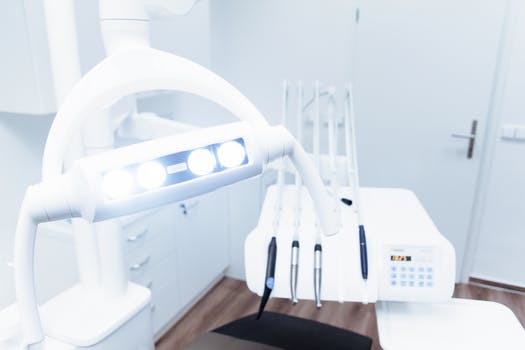
Laser technology is the most significant breakthrough in contemporary medicine and dentistry. It has enabled dentists to remove all their other instruments out of their arsenal while giving less surgical, less invasive treatments and more effective outcomes than they have ever had before.
Lasers produce energy by emitting light; however, their specific function in dentistry differs based on the procedure. Lasers are used as a tool for cutting during surgical and other restorative procedures, replacing the sensitive equipment used in dentistry, or as a method of vaporizing diseased or decayed tissue, leaving healthy tissue untouched. It acts as a heat source to speed up tooth whitening. It speeds up and enhances the effects of bleaching chemicals.
How Does Laser Dentistry Work?
One of the best features of dental lasers is that they are suitable for people with any dental fear. They don’t use sharp tools, so you won’t experience the sounds and vibrations from the drill for your teeth and scratching your teeth. Lasers create a quieter and more relaxing dental experience, which can help many patients get over anxiety about dental visits.
Laser Cleanings
While some people enjoy the sensation of having their teeth clean straight from the dentist, the majority of people don’t like the idea of having to clean. Low-level lasers can target and remove plaque and tartar buildup without the need for invasive procedures such as scraping tartar from your teeth or around the gum line. Traditional cleaning procedures can irritate the gum tissue, resulting in swelling, bleeding, and pain. However, laser treatments leave healthy tissue unaffected and allow for more comfortable cleaning.
Laser Gum Disease Treatment
Traditional treatments for gum disease include the use of sharp instruments and invasive procedures such as scaling, root planing, gum grafting, and gum surgery. However, laser periodontal therapy gets to the root of illness, treating the problem at the bacterial scale and returning the gums to a healthier environment.
So you don’t have to treat and retreat; laser gum disease treatments are more friendly, less invasive, and yield better results. A laser-focused cleaning focuses on the visible part of the tooth’s crown as well as the accumulation on the gum line. The periodontal treatment goes further under the gum line, removing tartar and plaque and tackling and killing the infection while maintaining healthy tissue.
Dental Decay, Root Canals, and Tooth Defects
Lasers can help you if you have a tooth cavity or an affected tooth. Lasers can remove decay from the inside of teeth and prepare the enamel surrounding it to place a tooth-colored filling. When your tooth has become infected and you need a root canal, lasers can help your dentist get rid of the infection effectively and safely while saving the tooth. Click here for more information.
Biopsies and Lesions
Lesions and abnormalities of the tissues in the mouth can be significant problems, and therefore laser technology is now available in a way, and thankfully. Biopsies, which include extracting tiny amounts of oral tissue to check for oral cancer, can be performed using lasers.
Traditional biopsies can be more uncomfortable and painful than biopsies using lasers. Lasers can also treat canker sores and remove lesions in the mouth. Most professional endodontists use laser treatments for different procedures.
Teeth Whitening
The dentist uses a laser and potent bleaching gel to whiten your teeth. The treatment usually entails using a resin-based, light-curable barrier to isolate the gum line. The teeth are whitened with a whitening gel made of hydrogen peroxide specially designed for dentistry.
Hydrogen peroxide is an active ingredient in products for tooth whitening. The stains present in the crevices of enamel are removed and destroyed using hydrogen peroxide. The pigments are diluted in this procedure which gives the appearance of whiter teeth.






